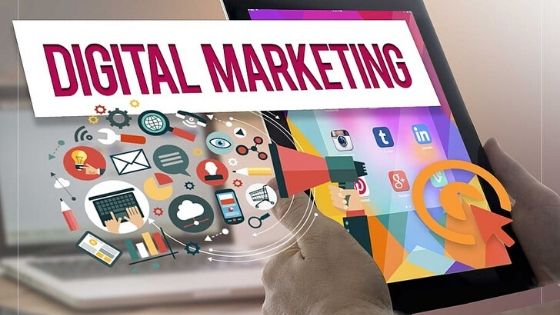Through the past decade, digital marketing morphed into the complex promotion machinery it is today because the avenues in which people consumed online content became varied and improved significantly. Mobile technology quickly dominated the world stage, especially with the emergence of smartphone technology coupled with social media platforms. The two married each other and produced a dynamic mix of digital content choices for people of varying demographics and preferences. Trends in digital marketing reflected a market always hungry for something new, unique, and different.
The customer’s voice is louder than ever through different platforms online that allow the user to assess your site, campaigns, who you are, and what your company is about even before they finally clickthrough. Consumers can instantly follow your product or service if they are satisfied, talk about you to others, give their recommendation or otherwise, and share your content. It is these engagements that Google and other search engines look for. If your customers are happy, Google algorithm takes note of it, along with other different factors to get your ranking correctly for SERP (Search Engine Result Page).
Digital Marketing uses digital channels to promote or market products and services to targeted consumers and businesses.
It is not impossible if traditional marketing platforms will be overtaken by digital marketing someday. It comes cheaper and simply connects to the audience much faster. Digital marketers need to follow where the people are at. They are on their phones almost all day, on their tablets, and laptops. Digital marketing efforts need to capitalise on this quickly.
New trends in marketing will run alongside proven and tested ones like chatbots, voice searches, and video marketing.
The one thing that stays constant in the digital marketing landscape is change. Below are current digital marketing trends this 2020 that hopefully can boost your strategies, even amidst the world crisis that we are all going through because of the recent pandemic. Nevertheless, here are some of the new digital marketing trends in 2020:
-
The Customer is King (Superb Customer Experience)
Gone are the days of hard-selling techniques where marketers jump through hoops just to convince people to buy or support their website. 2020 is the year of the customer. There is such an emphasis now on providing the best possible experience for the customer as a digital marketing strategy. Since it should be done consistently for the strategy to be a success, it is more of a best practice than merely a promotional technique.
You cannot hide behind your promotions or sales pitch concerning customer satisfaction. It’s going to be as evident as daylight if your customers are pleased with your product and performance.
For instance, you will know right away if the content isn’t working if your readers are not dwelling long enough to consume your content and if they’re not even engaging through likes, shares, recommendations, and positive feedback. Since the customer is king, then you need to change the content or modify it immediately. Produce A/B versions of the content and see which one the people liked. Prioritise a positive business culture, provide excellent service, and watch as your customer satisfaction rating increase significantly.
Offer substantial, well-researched content. You have to offer something more than information.
Customer experience (CX) is more than just a trend. 73% of customers regard customer experience as essential and allow it to influence their buying decisions.
To have excellent CX, websites need to be knowledgeable, efficient, convenient, and user-service. Secure payment options need to be available. Your website must be well-designed, relevant, up-to-date, and navigable. Backlinks and inbound links must be unbroken, and your website must be user-friendly and responsive. These are just some of the major factors that marketers and developers must observe to gain high CX ratings.
-
Facebook Is Peaking
Facebook is no longer the digital world’s social media forerunner. 41% of its total users are from the older generation(65 years old and above). It’s not struggling as a company, but it’s clear though where its influence is strongest, or otherwise. It’s no longer what younger demographics primarily consume content from, as this younger generation prefer more visual, interactive experiences they enjoy in apps like Instagram, Snapchat, and made more famous by the pandemic, TikTok.
After the infamous data breach scandal of 2018, Facebook lost significant credibility, and there is a growing number of dissatisfied users with the excessive spread of fake news on the social media app. It also has a lot of political propaganda and a favourite hangout of cyberbullies waiting for another victim whose life they can ruin. It’s not that safe of a place anymore. It’s getting a little too crowded. Also, ads continually disrupt users browsing time. The once-dominant social media platform is steadily dropping in popularity with younger demographics. It is not far from possible if Facebook becomes dead to Gen Z.
Every time you run a campaign, be sensitive and aware then of the demographics you are targeting. You need to be where the people are, specifically in your target niche. If you are targeting the young, then your social media ad campaigns must focus on IG (newsfeed, stories, IGTV). If you are advertising on Facebook, don’t make the design busy and too hip. There needs to be the right balance since half of its demographic is older. Future digital-marketers need to take a look at who their target market might be because Facebook can be unsuitable for some campaigns, especially as it continues to drop downwards with younger people. Facebook is still very massive, and many people continue to use it. Still, marketers should be cautious with who they are trying to connect with and make sure their target audience is always on Facebook, or else, your efforts and budget will be wasted targeting the wrong social media platform.
-
Instagram is the Social Media App of Choice by the Youth
Instagram has already passed one billion users. It is one of the most rapidly growing social media platforms, especially among a younger demographic under their 30s. Generation X and younger millennials who are finding Facebook a little bit crowded and filling up with the older generation have moved to apps such as Instagram and Snapchat. Facebook is no longer the most popular social media app, although they are still a mammoth in sales and revenues, of course. But the significance of IG being able to capture the younger market is still remarkable.
Millennials dominate the buying market, and Gen Z is now transitioning slowly into the workforce themselves. It’s the perfect time for IG to strike the iron while it’s hot with features such as shoppable social media posts.
-
Shoppable Posts (Social Commerce) Will Get More Mainstream
There is now a way for businesses to get their social media followers to visit their online stores.
Social commerce or social shopping allows users to shop without leaving the social media platform. Consumers can directly buy products by clicking a post or ad. Shoppable social media posts have been done prior. Still, it was not until Instagram Checkout was launched in 2019 that they got better traction with the buying market.
It is not surprising because there are 3.8 billion active social media users. That is about 49% of the world’s population. If anything, social media platforms should have done it sooner.
Shoppable social media posts create fewer steps for shoppers and make life easier for them. Nowadays, anything that can make users’ lives more valuable, convenient, and hassle-free quickly gets their support. People are just more mobile, and there is a hunger for the buying public, mostly millennials, of streamlining critical processes so they can allot their time unto other things. Wor-life balance is significantly valued, and shoppable social media post is a simple, yet powerful way of cutting shopping time down. It also lessens a common problem in eCommerce stores—shopping cart abandonment.
You don’t even have to be an ecommerce brand to sell on social media. As long as you sell products, excellent sales can happen to you by allowing transactions through social media.
Your Shopify store can be easily linked to your Instagram account, or a plugin can be inserted for direct access to Snapchat. You can also make a store on Facebook or Pinterest, one of the first social media platforms that offered shoppable posts.
-
Employee Engagement
Efficiency and friendly customer service are the foundation of great customer experience. 46% of consumers will abandon a brand if its employees are not adept and knowledgeable. A negative employee attitude is the number one reason that hinders people from doing business with a company.
Your team, especially employees that deal directly with clients, are the face of your brand. Check how your employees are keen on customer satisfaction. The way they are handling your customers affects your business. If they have direct access to your customers, they are front-liners that need to carry the heart of your brand and should be trained well on how to represent the business professionally and excellently.
When you’re turning the responsibility of creating an excellent customer service over to your employees, you need to make sure that they want your business to succeed as much as you do.
The key to this is building a strong foundation of employee engagement and taking actionable steps ensuring all employees grasp the mission and vision of the company and act accordingly by them.
Your employees’ happiness and satisfaction are also vital. Work towards a high level of employee engagement in improving customer experiences.
-
Direct Messaging
Brands are taking conversations with customers to a more personal level. Direct Messaging (DM) is becoming one of the hottest digital marketing trends of 2020.
Brands are using messaging apps like Facebook Messenger, Viber, Line, WhatsApp, and even private messages on social media platforms Twitter, Instagram, and Facebook. Brands are forging more personal and reliable connections with their target market to make the brand warmer and more human. It’s a perfect way for consumers to know the business is legitimate as they get to interact in a more personal manner to the people behind the brand. Their queries and concerns also get immediate action.
Use DMs or private messaging with caution, though. The customer must first agree to be messaged, or else you appear spammy. It’s better if the customer sends the DM first. Always encourage users who send direct messages to provide their handle or username. If they are messaging concerns, ask for details related to their queries, like proof of purchase, invoice number, and the like. It verifies if they are legitimate customers with valid requests or concerns.
-
Visualisation
Readable content may be booming right now, but you should not forget about visual content that is still very significant since people still prefer visual content over plain text. Instagram and Pinterest have experienced steady growth because the fact remains that consumers of digital content are highly image-focused.
Google and other companies are investing in visual search technology because 62% of millennials are more interested in visual search than any other new technology.
Visuals are also easier to remember than written content. Adding data visualisations like infographics, images, and videos to your content makes it more dynamic and appealing and helps you get your message across faster and more impactful.
-
Chatbots Will Dominate Customer Service
Chatbots are AI (Artificial Intelligence) software functioning as virtual concierge, connecting with customers and assisting them with purchases, queries and other concerns. Chatbots are designed to have natural or human-like interactions, primarily through text chat windows. Verbal interactions are also possible, depending on the kind of chatbot technology that a website is using. Aside from dealing with customers for immediate responses, low-level queries and the like, chatbots conduct machine learning tasks such as collect data insights, learns customer behaviors and preferences, all for continued customer service.
Since 2018, chatbots have become mainstays on Facebook by tens of thousands to perform a plethora of tasks like providing weather reports, automating vital customer support functions, and allowing user experiences to get personalised and more focused.
80% of businesses will be using chatbots more and more because it’s going to be a 24-hour service, providing instant responses to customer queries, and removing the need for breaks, leaves, or overtime pay. 43% of consumers also like contacting online chatbots better than phone customer service centers because their concerns get faster action.
-
Personalisation
Data gathering has become advanced and has dramatically improved over the years. For this reason, the level of personalisation possible that consumers expect and want from brands also increased.
Consumers are flooded with generic messages, emails, and other types of correspondence and have developed fatigue for this kind of marketing strategy. Traditional advertising is losing its effectiveness because it lacks the element of personalisation that forges real connections between the brand and the target market.
80% of consumers prefer doing business with a brand that personalises their consumer experience.
In the 2002 movie Minority Report, the character John Anderton, played by Tom Cruise, is bombarded by a series of personalised ads calling him by name as he walks through the city. It seemed surreal that time, but not anymore in this digital era.
Improvements in AI and Machine learning technologies, for instance, have made a way for companies to provide personalised services to their clients, like content, designs, email campaigns, and product recommendations.
- Micro-Influencers
Influencer marketing is an effective digital marketing trend. Its success has led to big-time influencers can very much call the shots through their reviews and product endorsements. But influencers do not know it all. If they have a credible background and knowledge about a certain topic, well and good. But a lot of time, a big number of influencers capitalize on their popularity more than giving a knowledgeable and unbiased review about products and services in their niche. For instance, they may choose to feature products and services based on sponsorships, affiliation or advertisements on their channel. There are payment tables and pricing lists given by some influencers even before they talk about your product. Social media influence has become an expensive commodity.
There may be some influencers who are doing what they do for the authentic pursuit of truth—giving knowledgeable, unbiased, and genuine product reviews, feedback, comparisons, and endorsements. Consumers need to be aware of this, and because information is just in the tip of our fingers these days, we need to be intelligible and resourceful ourselves to research and dig deeper into certain topics we want to know more of, and not just rely on what influencers are saying.
Since the global competition among influencers are becoming more rigid, SMEs (small to medium-sized enterprises) are choosing to focus on their locality and work with small to medium-sized influencers as well.
A micro-influencer is a medium-sized influencer with a narrower niche, more often a specific geographical location, popular enough to be influential with the target market of their sponsors. Their services are more affordable, and have a better engagement rate than the more popular, top tier influencers. They can dedicate more time with their followers.
It’s also easier provide a more personalised service with micro-influencers, and to specialise in a particular niche as these micro-influencers already represent the niche at the onset.
Micro-influencers, or accounts with around 30,000 followers, are found to be very useful. They have a 60% higher engagement while being 6.7 times more cost-effective than influencers with more followers.
Conclusion
Trends are moving fast in the digital marketing world. We will see more trends rise, such as AI technology, voice search, and more interactive content. The digital world is ever-changing, and businesses that do not evolve will stagnate and be left behind. Go for the younger demographics while nurturing the mature ones you have. Be an ambassador for your consumers so they, too, can be more tech-savvy and keep up with the rest of the world. As you bridge gaps between demographics, you actually strengthen and widen your consumer base. Use varied platforms other than your website. Be where people are at. And above all, make people’s lives better with the brand, product, and service you carry. It makes you timeless amidst changing times and changing digital marketing trends.
AUTHOR BIO
JOHN OCAMPOS
John Ocampos is an Opera Singer by profession and a member of the Philippine Tenors. Ever since, Digital Marketing has always been his forte. He is the Founder of SEO Guru, and the Managing Director of Tech Hacker. John is also the Strategic SEO and Influencer Marketing Manager of Softvire Australia.






